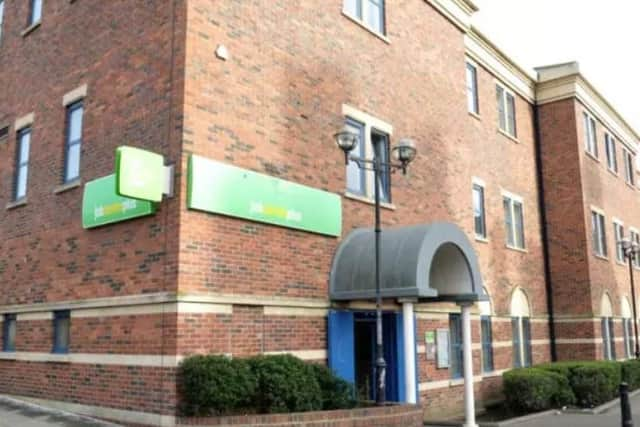Rise in jobless benefits claimants in Hartlepool, say latest figures
and live on Freeview channel 276
In July there were 3,980 people claiming out-of-work benefits in Hartlepool, but the figure rose to 4,025 in August - an increase of 45.
It equates to 7% of the working age population in the town and remains the highest proportion in the country, compared to 3.6% in the North East and 2.2% nationally.


Advertisement
Hide AdAdvertisement
Hide AdIn the Easington constituency, which includes Peterlee, Blackhall, Easington and Horden, the figure remained 2,670 in July and August.
In the Sedgefield constituency it rose from 1,575 in July to 1,635, and in the Stockton North constituency, which includes Billingham, Wynyard and Wolviston, it rose from 2,190 in July to 2,250 in August.
Employment in the North East stands at 1,195,000 or 70.8% - a fall of 34,000 over the quarter and 17,000 over the year. This compares to a rate of 75.5% nationally.
North East unemployment stands at 56,000 or 4.4% - a fall of 3,000 over the quarter and 22,000 over the year. This compares to a rate of 4.0% nationally.
Advertisement
Hide AdAdvertisement
Hide AdPaul Carbert, policy adviser for the North East England Chamber of Commerce, said: “There is a gap opening up between our employment rate and the national average.
“It is also a worry that the number of people looking for work, or not able to work, is increasing.
“However there is good news on unemployment, but elsewhere there are possible causes for concern.
“While unemployment has continued to fall in the North East, (reaching a new record low in terms of the number of the number of people unemployed and the unemployment rate), the employment rate has fallen back from the record high reached earlier this year.
Advertisement
Hide AdAdvertisement
Hide Ad“The gap between the national average employment rate and the North East rate has increased in recent months, suggesting that the region has not kept pace with the national growth in employment.
“The fall in employment has been matched by an increase in the economic inactivity rate, which measures people not in work but not seeking work or unable to start work.
“There can be a number of reasons for this, and it highlights the importance of part-time and flexible working options, and initiatives to support older workers and those in poor health.”
It comes as the employment nationally increased by 3,000 in the three months to July to 32.4 million, giving a rate of 75.5%, according to the Office for National Statistics.
Advertisement
Hide AdAdvertisement
Hide AdWorkers also benefited as average earnings increased by 2.6% in the year to July, up from 2.4% the previous month.
The latest consumer prices index (CPI) rate of inflation was recorded at 2.5%.
It came as unemployment fell by by 55,000 over the period to 1.36 million, giving a jobless rate of 4%.
But the claimant count, which includes people on Jobseeker's Allowance and the unemployment element of Universal Credit, rose by 8,700 to 918,800 in August, around 118,500 more than a year earlier.
Advertisement
Hide AdAdvertisement
Hide AdJob vacancies, rose 14,000 on quarter to 833,000, a record high.
The number of people classed as economically inactive, including students, those on long-term sick leave, taken early retirement, or who have given up looking for work, rose 108,000 on quarter to 8.76 million in the last three months, giving a rate of 21.2%.
The number of self employed workers decreased by 46,000 to 4.8 million.
Secretary of State for Work and Pensions Esther McVey said: "Since 2010 we have delivered significant growth in jobs, and in the last six months we've seen real-terms wage growth.
Advertisement
Hide AdAdvertisement
Hide Ad"We haven't had a lower unemployment rate for over 40 years, and I'm especially proud that youth unemployment is at a record low, falling by over 45% since 2010 - opening up career opportunities for our next generation.
"In the EU we see unemployment rates over double those of the UK. This Government is transforming this country into a great working nation. Ready and prepared for the future challenges after Brexit."